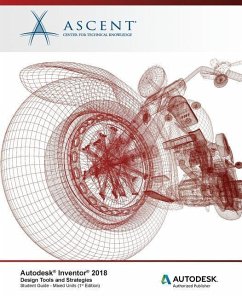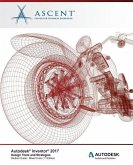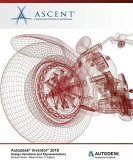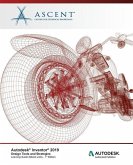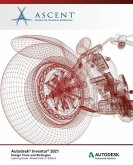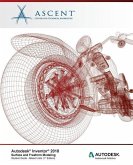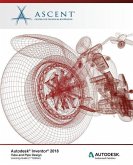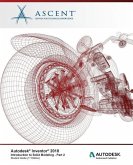The Autodesk(R) Inventor(R) 2018: Design Tools and Strategies student guide provides instruction on how to incorporate the use of top-down design and advanced modeling techniques into your design environment. The student guide begins with an introduction to top-down design and the software tools that can be used. There is a focus on multi-body design, deriving components, working with layouts and sketch blocks, and how associative links and adaptive parts can help you incorporate design intent into your models. The student guide also includes chapters that cover Generative Shape Design, Frame Generator, and Design Accelerator, teaching you how you can use these advanced design tools to quickly create designs that meet your requirements. The topics covered in this student guide are also covered in the following ASCENT student guides, which include a broader range of advanced topics: * Autodesk(R) Inventor(R) 2018: Advanced Assembly Modeling * Autodesk(R) Inventor(R) 2018: Advanced Part Modeling Topics Covered * Learn how to enforce design intent using three major top-down design techniques. * Create solid bodies and correctly assign features to specific solid bodies. * Modify solid bodies in a model by moving, removing, splitting, combining, or redefining them. * Create new parts and assemblies from multi-bodies. * Derive new geometry in a part by importing and referencing objects from a source part. * Create and modify layouts and sketch blocks. * Define and test the kinematic motion with the use of nested sketch blocks. * Create 3D models from sketch blocks. * Specify geometric entities of part features to change, while controlling the size or location of other entities in an assembly. * Create a Shape Generator study that sets a goal and criteria to accurately define a model's working environment. * Promote a Shape Generator study to the modeling environment. * Create structural frames members using a skeletal wireframe part. * Adjust frame member ends to obtain required joints. * Create and publish custom frame member profiles to the Content Center. * Automatically create geometry using component generators. Prerequisites The material covered in this student guide assumes a mastery of Autodesk Inventor basics as taught in the Autodesk Inventor: Introduction to Solid Modeling student guide.
Hinweis: Dieser Artikel kann nur an eine deutsche Lieferadresse ausgeliefert werden.
Hinweis: Dieser Artikel kann nur an eine deutsche Lieferadresse ausgeliefert werden.

